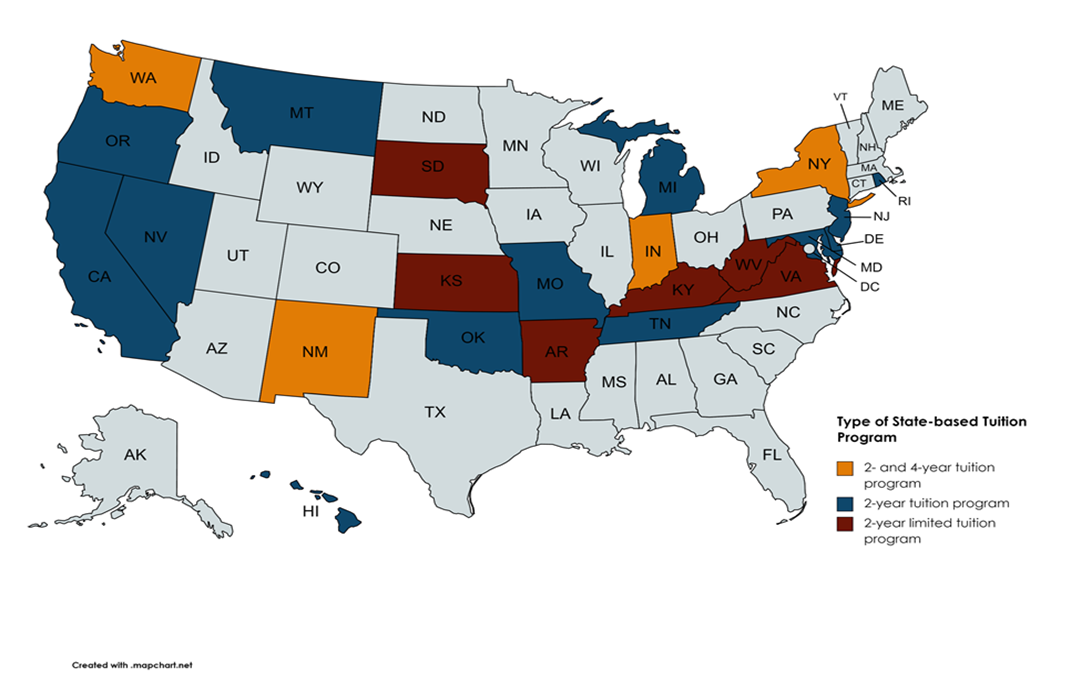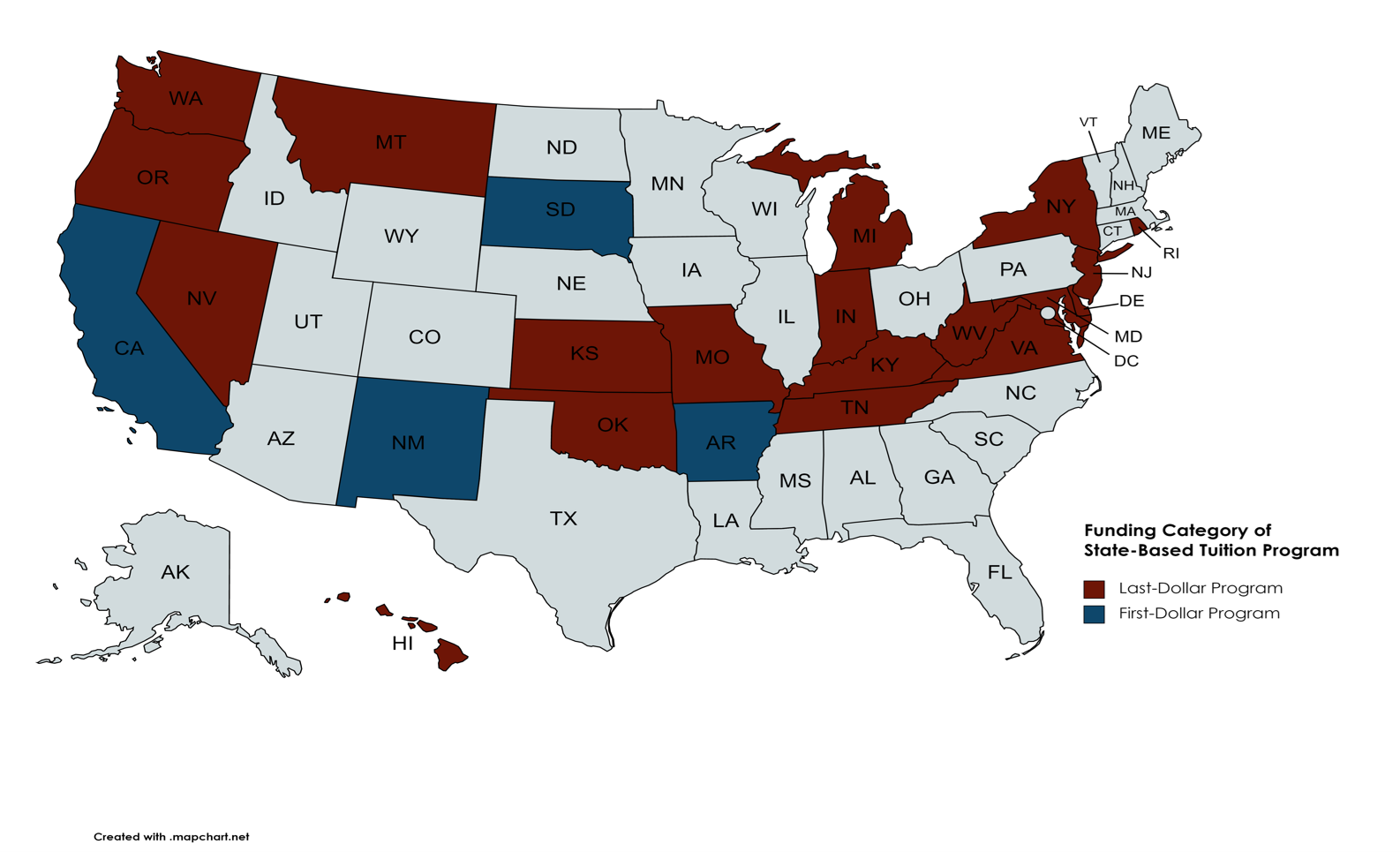This Community College Month, States Should Follow New Mexico by Increasing Educational Opportunities
By Christian Collins
It’s Community College Month, which is a great time for policymakers to consider how to support the more than 40 percent of undergraduate students who attend community colleges. At the federal level, President Biden’s proposed FY2023 federal budget takes a strong step toward increased national investment in higher education by boosting funds for the Pell Grant program and minority-serving institutions such as HBCUs. Noticeably absent, however, is any momentum toward universal free community college. The lack of federal movement presents a challenge for advocates of expanding educational opportunities. However, states and municipalities have countered by passing or expanding their own programs to provide tuition-free higher educational opportunities.
Chief among recent advances for tuition-free education programs is the New Mexico Opportunity Scholarship Act signed into law last month. The Act has the distinction of being the only state-funded scholarship program in the nation that 1) is available to both recent high school graduates and returning adult learners, 2) can be used for full-time and part-time studies, and 3) can be used for training certificates in addition to associate and bachelor’s degrees. The program covers full tuition and fees at in-state public higher education institutions, and the scholarship lets students “stack” other aid received through federal aid or private scholarships to obtain additional funds to cover other expenses, such as housing, child care, and books.
Current Status of State-based Free Tuition Programs
Because New Mexico already had a previous version of its Opportunity Scholarship in place before last month’s expansion, it is not a new entry among the 23 states with at least some version of a state-funded tuition program. All 23 programs can be used to cover tuition costs for 2 years at a community college, but 6 programs limit eligibility to associate degrees from “in-demand” or “high-demand” degree fields. New Mexico’s expanded Opportunity Scholarship has made it the fourth state to cover both two-year and four-year degrees.
State-Based Tuition Assistance Programs by Program Type[1]

Students’ ability to stack the New Mexico Opportunity Scholarship with other financial aid creates new educational pathways for students with lower incomes. This provision makes it a “first-dollar” program, meaning that it covers tuition and fees upfront and allows students to use other aid sources to cover other expenses. First-dollar programs are more advantageous and flexible for students than “last-dollar” programs, which are less expensive for states and, therefore, more common. Last-dollar programs are often unavailable for students with lower incomes since they only provide funding where federal and state grants fall short in covering tuition and fees, leaving no extra funds for students to use for other expenses associated with higher education such as housing and child care.
First- and Last-Dollar Programs by State[2]

States and localities seeking to implement their own tuition assistance programs should strive for first-dollar programs. Providing less assistance through a last-dollar model can cause students to take on some debt that such programs are meant to avoid, which disproportionately affects students who have lower incomes—particularly first-generation students and students of color. Eliminating community college tuition through first-dollar programs also provides a lifeline for institutions recovering from pandemic-caused enrollment decreases, as tuition assistance is estimated to bring a 26 percent overall enrollment increase in higher education, and 86 percent of that increase for community colleges would be from students who otherwise would not be able to enroll.
Community colleges are a key avenue for postsecondary participation and credential attainment for Black and Latinx students. First-dollar programs would be a lifeline for the 82 percent of Black and 76 percent of Latinx students at public two-year institutions with unmet financial need when factoring in all expenses associated with higher education.
Tuition is a Regressive Barrier to Higher Education
In the face of federal inaction on tuition assistance, states have stepped up to counter the impacts of reduced funding of state-level education over the past several decades. This intervention is important, given that a 10 percent increase in institutional funding can lead to a 14.5 percent increase in degree and certificate completion at public 2-year colleges. Tuition-assistance programs, which are part of a moral obligation to remedy the harmful cuts to state education funding, can serve in partnership with potential student loan forgiveness programs to reduce student costs and prevent new student loan debt. While necessary, tuition programs are not a complete solution to disparities in higher education. Potential students from communities historically denied higher educational opportunities still need access to knowledge about programs they are eligible for and encouragement from advisors, faculty, and other college officials to apply for these programs and pursue higher education. Though not the complete solution, the New Mexico Opportunity Scholarship Act is a prime example for other states and localities on how to break down financial barriers for students of all backgrounds and economic status.
[1] Source: Data taken from NerdWallet analysis (with updated status for New Mexico): States With Free College Programs – NerdWallet
[2] Source: CLASP analysis of data compiled by NerdWallet (with updated status for New Mexico): States With Free College Programs – NerdWallet
